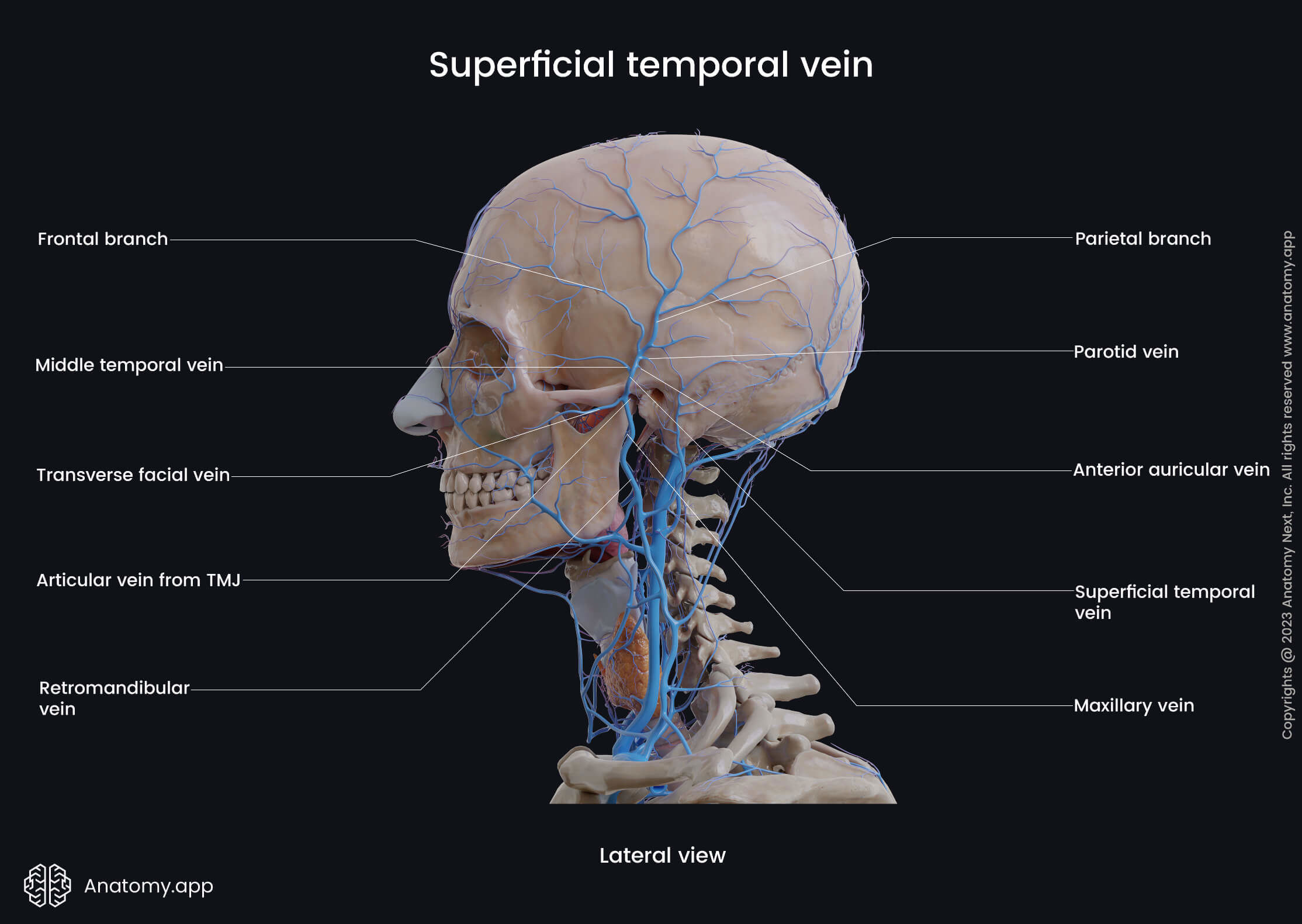- Anatomical terminology
- Skeletal system
- Joints
- Muscles
- Heart
- Blood vessels
- Blood vessels of systemic circulation
- Aorta
- Blood vessels of head and neck
- Arteries of head and neck
- Veins of head and neck
- Veins of head
- Extracranial veins
- Intracranial veins
- Veins of neck
- Veins of head
- Blood vessels of upper limb
- Blood vessels of thorax
- Blood vessels of abdomen
- Blood vessels of pelvis and lower limb
- Blood vessels of systemic circulation
- Lymphatic system
- Nervous system
- Respiratory system
- Digestive system
- Urinary system
- Female reproductive system
- Male reproductive system
- Endocrine glands
- Eye
- Ear
Superficial temporal vein
The superficial temporal vein (Latin: vena temporalis superficialis) is a blood vessel that arises from the plexus of veins that anastomose across the scalp. It collects venous blood from the forehead, parietal and temporal regions of the head, external ear, and parotid gland.
The superficial temporal vein descends along the anterior aspect of the auricle, then unites with the maxillary vein at the level of mandibular neck. It continues further as the retromandibular vein, which drains into the internal or external jugular vein. The main tributaries of the superficial temporal vein are:

